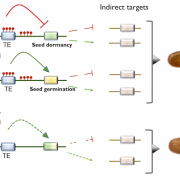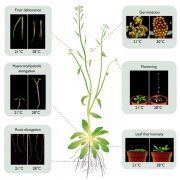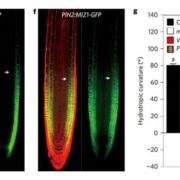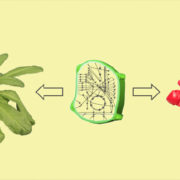Some Like it HOT: Protein Translation and Heat Stress in Plants
The ability to acclimate to high temperatures that are normally lethal is common to virtually all organisms on the planet. A short exposure to milder heat stress informs organisms that they should ready themselves in case they experience even warmer conditions. Acquired thermo-tolerance in plants is important because plants must constantly balance growth and defense; any energy spent on heat stress responses will take away from plant growth and yield. Temperature stress is likely to become more prevalent in the coming decades due to climate change and the rise in extreme weather events. Understanding how plants respond to high temperature stress is therefore crucial in efforts to engineer or breed crop plants, for example, to tilt the balance between defense and growth to our advantage, at a minimal energetic cost for the plant. New work by Vierling, Peng and coauthors (Zhang, et al., 2017) reveals clues about how plants cope with and recover from heat stress.
A genetic analysis of thermotolerance is tricky, as desired mutants are likely to die since they would lack the ability to adapt to and/or recover from heat stress. The key is to design an assay with high survival rate and a clear phenotype. Hong and Vierling (2000) published the first genetic screen in a higher eukaryote for mutants with a loss in acquired thermotolerance, based on cell elongation in Arabidopsis seedling hypocotyls. Dark-grown seedlings kept at 22ºC die when moved from 22ºC to 45ºC for only 2 hours, but survive if first pre-conditioned at 38ºC before exposure to 45ºC. A key sign of impending trouble is that the hypocotyl ceases to elongate, so the hot screen looked for mutants whose hypocotyls ceased to grow following pre-treatment at 38ºC and treatment at 45ºC. The first gene identified from this screen, HOT1, encodes the heat shock protein Hsp101, a molecular chaperone critical for acquired thermotolerance in yeast, flies, cyanobacteria and plants (Hong and Vierling, 2000). Heat shock proteins prevent the accumulation of protein denaturation and aggregation following temperature stress, and finding a mutant in Hsp101 was a welcome validation of the screening conditions.
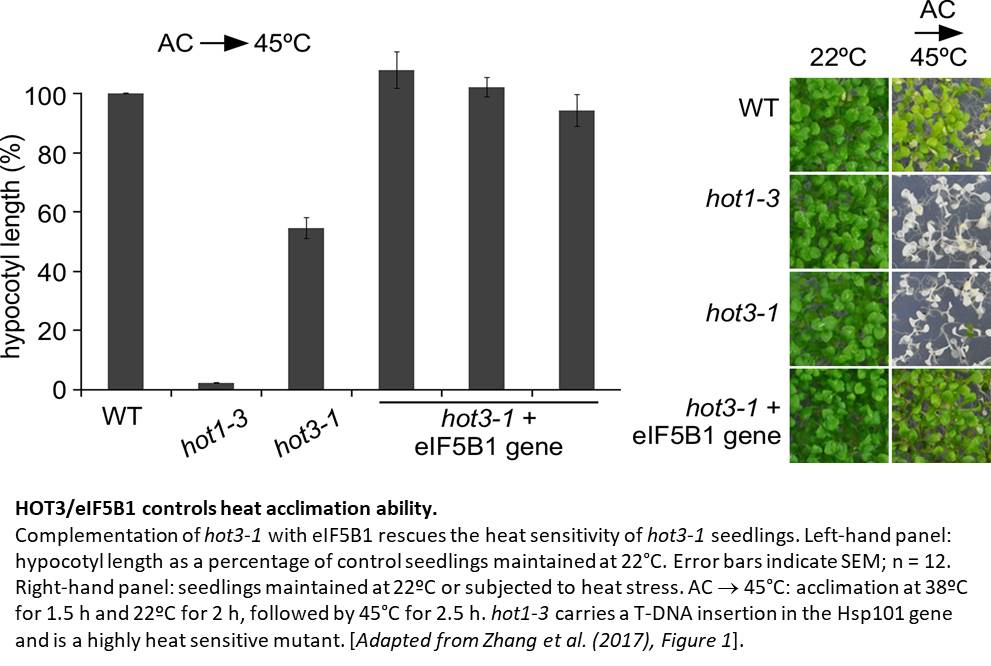 Zhang et al. (2017) reveal that HOT3 encodes the translation initiation factor 5B (eIF5B). eIF5B plays several roles in initiation of translation, including the joining of ribosomal subunits at the beginning of messenger RNAs to kick-start translation. In a twist of fate, the initial hot3 mutant, hot3-1, is temperature-sensitive, reducing protein stability or activity only at higher temperatures. Temperature-sensitive mutants are powerful tools to dissect the role of genes essential for growth and development, because the mutant phenotype is conditional. In fact, stronger hot3 alleles have pronounced phenotypes even when grown at 22ºC, and affect the translation potential of hundreds of genes even before being exposed to high temperatures.
Zhang et al. (2017) reveal that HOT3 encodes the translation initiation factor 5B (eIF5B). eIF5B plays several roles in initiation of translation, including the joining of ribosomal subunits at the beginning of messenger RNAs to kick-start translation. In a twist of fate, the initial hot3 mutant, hot3-1, is temperature-sensitive, reducing protein stability or activity only at higher temperatures. Temperature-sensitive mutants are powerful tools to dissect the role of genes essential for growth and development, because the mutant phenotype is conditional. In fact, stronger hot3 alleles have pronounced phenotypes even when grown at 22ºC, and affect the translation potential of hundreds of genes even before being exposed to high temperatures.
How does protein translation fit into plant responses to heat stress? Ribosomes fall off mRNAs after exposure to heat stress, but begin to re-associate quickly to initiate new protein synthesis. This process is much slower in hot3-1, and as a consequence the translation of 2-3,000 genes is delayed. The mutant is therefore slower to correct heat-induced cellular damage, since it lacks the ability to replenish the necessary proteins in a timely manner. Translation already shows hints of breaking down under milder heat stress in hot3-1, suggesting that the mutant may also have problems acclimating to high temperatures.
The hot3 mutants show delayed translation for only 10-15% of the roughly 20,000 genes expressed at this stage of development, hinting at a new level of translation regulation governed by interaction between eIF5B and other ribosome components. A future challenge is to use our new knowledge about the role of eIF5B and translation in thermotolerance to understand how the activity of this translation initiation factor may be tuned to benefit plant fitness for agriculture.
REFERENCES
Zhang, L., Liu, X., Gaikwad, K., Kou, X., Wang, F., Tian, X., Xin, M., Ni, Z., Sun, Q., Peng, H., and Vierling, E. (2017). Mutations in eIF5B confer thermosensitive and pleiotropic phenotypes via translation defects in Arabidopsis thaliana. Plant Cell Published August 14, 2017. DOI: https://doi.org/10.1105/tpc.16.00808.
Hong, S.W., and Vierling, E. (2000). Mutants of Arabidopsis thaliana defective in the acquisition of tolerance to high temperature stress. Proc. Natl. Acad. Sci. USA 97: 4392-4397.


